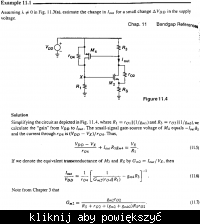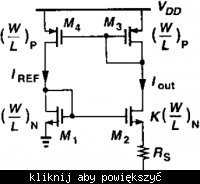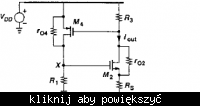spur
Newbie level 3

example 11.1 of Razavi's "Design of analog cmos integrated circuits" is about this current mirror.

He estimates the change in Iout for a small change in supply voltage.
He uses an expression from Chapter 3 of that book to write \[G_{m2} = {{I_{out} } \over {V_X }}\]
The problem is, eq. 11.7 is derived for a case where drain of CS transistor is grounded; While in this current mirror drain of M2 is connected to a resistor (R3)

Is it correct to use equation 11.7 in this example?
Last edited by a moderator: